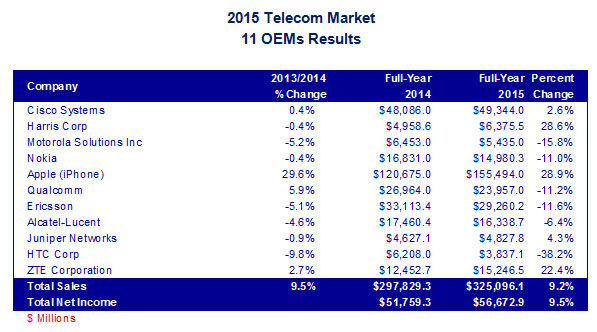Upcoming Bitcoin Cash Halving Date BCH Halving Countdown
Contents
In fact, generating Bitcoins is the process of a block creation, a reward that a miner receives bitcoins. One block consists of a wallet address, a list of transactions, service data, and a code, which is an actual Bitcoin. Each newly generated block that a miner creates brings him Bitcoins.

The third, more realistic, is that it will occur in 509 days, at the current rate of about one mined block every 9.2 minutes, or around mid-March also in 2024. Will likely continue to drop as the economic rewards for mining become less attractive, and smaller, less efficient miners are unable to generate a profit through bitcoin mining. In fact, at the theoretical what is petkingdom rate of 10 minutes per block it is estimated that the date of Bitcoin’s next halving could be 1 May 1, 2024. If that were the case, 1,451 days would have elapsed since the previous halving, which is the longest period ever, not far from the theoretical 1,458 days. If you are familiar with bitcoin, you will know that bitcoins have to be mined.
The Bitcoin halving history logs three halving events that have already happened – in 2012, 2016, and 2020. After each halving, the price of Bitcoin has grownexponentially. Instead, these price swings are usually a combination of events, with the Bitcoin halving being just one of them. Throughout 2021, the entire cryptocurrency market saw a huge surge in popularity, which, in turn, influenced the price growth of most cryptocurrencies. Since it was first created and launched in 2009, Bitcoin has had three halving events.
Bitcoin mining is the process by which new bitcoins are entered into circulation, but it is also a critical component of the maintenance and development of the blockchain ledger. It is performed using very sophisticated computers that solve extremely complex computational math problems. The first Bitcoin halving occurred on Nov. 28, 2012, after a total of 10,500,000 BTC had been mined. The next occurred on July 9, 2016, and the latest was on May 11, 2020. The third halving occurred not only during a global pandemic, but also in an environment of heightened regulatory attention, increased institutional interest in digital assets, and celebrity hype. Given these additional factors, where Bitcoin’s price will ultimately settle in the aftermath remains unclear.
However, the actual timelines are a bit different, because Bitcoin’s hashrate grows faster than the difficulty adjustment manages to keep the block-time close to 10 minutes. An application-specific integrated circuit miner is a computerized device designed for the sole purpose of mining a cryptocurrency. Hash rate is the measure of the computational power in a proof-of-work cryptocurrency network. The price of bitcoin has risen steadily and significantly from its launch in 2009, when it traded for mere pennies or dollars, to April 2021 when the price of one bitcoin traded for over $63,000. Because a Bitcoin halving is a major event, it has a significant effect on various parties involved in Bitcoin’s network.
The 2024 halving will likely occur between February 2024 and June 2024. Our most updated estimate is displayed at the top of this page. In the image https://cryptolisting.org/ below, you can see Bitcoin’s inflation rate during each period. In the 2024 halving, the reward will drop from 6.25 BTC per block to 3.125 BTC.
What is Bitcoin Cash Halving?
The next Bitcoin halving is scheduled to take place in 2024 at block 840,000. CryptoAnswers does not provide investment, tax, or legal advice, and nothing in our guides or any articles or communications from CryptoAnswers should be taken as such. In addition, CryptoAnswers does not represent any government nor are we agents of any government. Before undertaking any action, be sure to discuss your options with a qualified advisor. Stuart is an entrepreneur, trader and passionate Blockchain & Crypto enthusiast. He is determined to help anyone genuinely interested in learning more on this revolutionary technology.

Circa 2020, billions of Dollars of institutional money began to flow into cryptocurrency investments. Members should be aware that investment markets have inherent risks, and past performance does not assure future results. Investor Junkie has advertising relationships with some of the offers listed on this website. Investor Junkie does attempt to take a reasonable and good faith approach to maintaining objectivity towards providing referrals that are in the best interest of readers.
Ideas To Commerce Throughout Bitcoin Halving
So while the number of bitcoins miners could earn dropped from 25 BTC to 12.5 BTC, the value of the newly-halved 12.5 BTC reward increased. Miners went from earning around $600 per bitcoin in 2016 to more than $20,000 per bitcoin 17 months later. Even though future halvings will cut the number of bitcoins awarded to miners in half, the value of those bitcoins will likely increase.

Safe to say, that’s a very long time in the distant future. If you’re not aware, Bitcoin Cash is actually closely related to Bitcoin – this is something that might be obvious from the name of the network, as well. Essentially, similar to another popular project called Bitcoin SV , Bitcoin Cash was a hard fork from BTC.
The crypto market has been maturing considerably because the final halving in 2016, and there are actually extra cryptocurrencies competing for customers. It is worth noting that these estimates were also made in the past for the previous three halvings, and in no case were they accurate. Obviously, the closer we get to the block that triggers the halving, the more precise the estimates become, but almost two years later, it is highly unlikely that the current estimates are accurate. The first is that the difficulty is changed every 2,016 mined blocks so that the block-time is kept as close to 10 minutes as possible. The second is that there is a halving every 210,000 blocks.
The reality is most miners are very smart and price in the halving, so they don’t end up shutting down any miners. The Bitcoin halving is scheduled in block height, not date. Ethereum is the second-largest cryptocurrency after Bitcoin, with $20 billion in capital and $12 billion every day trading volume. As it later turned out, that was only a short-term correction. The bullish trend soon continued and developed into exponential growth. This growth peaked on 17 December 2017, when the price reached its all-time high of $19,700.
Merchant, consumer, and speculator adoption lead to a higher price and thus incentivize more miners to participate and secure the system. This is in stark contrast to how central banks around the world like the Federal Reserve Bank print more money, continuously creating inflation. It is an open-source, block chain-based technology that was designed as a peer-to-peer payment system. Payment is conducted semi-anonymously between individuals. Much like digital cash, each payment is registered on the blockchain.
The number of Bitcoins generated per block, i.e., reward is reduced by 50% every 210,000 blocks. While many cryptocurrencies have halving mechanics built into them, Bitcoin halvings are still the most significant and receive the most attention and news coverage. That’s because Bitcoin’s halving affects miners positively as much as it does negatively. The positives are pretty self-explanatory – with each halving, BTC becomes more scarce, which in turn drives up its demand within the market .
When is Bitcoin Halving 2020?
As mentioned above, the total number of bitcoin is capped at 21 million. A new block is added to the blockchain every ten minutes, which means we expect the last bitcoin to be mined around 2140. Now, the Bitcoin Cash halving caused a considerable number of miners to abandon the network in search of better profits. As these miners exited the BCH network, the mining difficulty started rising even more, which made it further unprofitable for existing miners to mine BCH coins.
- Since the halving reduces the supply of new bitcoins, and demand usually remains steady, the halving has usually preceded some of Bitcoin’slargest runs.
- Peter Brandt is a renowned cryptocurrency trader and a fan of classic trading charting principles since 1980.
- She is a digital nomad currently based in Asheville, NC, and shares about her life on the road over on Substack.
- In other words, this is Bitcoin’s way of using a synthetic form of inflation that halves every four years until all Bitcoin is released and is in circulation.
- After every 210,000 blocks mined, or roughly every four years, the block reward given to Bitcoin miners for processing transactions is cut in half.
This is coded into the distributed software known as a node. All the miners use the same node software which includes a fixed schedule of diminishing mining rewards. The first halving happened in November 2012 when the initial supply was cut from 50 BTC per block to 25 BTC. Four years after bitcoin’s genesis block and after over 10 million bitcoins and 210,000 blocks have been mined, the first halving occurred on November 28, 2012.
What the Bitcoin protocol dictates and why halving dates are important
If there’s no profit to be made with a specific crypto asset, or if the profits get cut in half, a miner can simply choose to transition to another cryptocurrency. This is what happened en masse after the BCH halving date. On average, therefore, a halving has occurred every 1,382 days to date, or just under three years and ten months. On this desk, we’ve got listed the upcoming Bitcoin halving occasions and categorized them into block quantity, block reward, and share mined. Bitcoin halving decreases the variety of new Bitcoins which are generated per block which lowers the availability of recent Bitcoins, thus making the acquisition worth of the coin costlier.
Moreover, the price of Bitcoin will probably go up so the cost of those fees. Then, you have the speculatory nature of the cryptocurrency market as a whole. Well, for starters, it’s worth acknowledging that Bitcoin halvings don’t only influence the price of BTC – the entire crypto market tends to follow along, as well.
New bitcoins are issued by the Bitcoin network every 10 minutes. For the first four years of Bitcoin’s existence, the amount of new bitcoins issued every 10 minutes was 50. The day the amount halves is called a “halving” or “halvening”. At the time of the Bitcoin halving the block reward will be cut in half and therefore every Bitcoin mining operation will have it’s revenue also cut in half. The past performance of any financial product, including Bitcoin, is not indicative of future results.
Around the year 2140, the last of the 21 million bitcoins ever to be mined will have been mined. At this point, the halving schedule will cease because there will be no more new bitcoins to be found. While there are many cryptos that experience a halving, not all do.

